Why We Crave the Unusual
Modern travel has become both easier and, oddly, more predictable. Budget flights, social media feeds, and digital guidebooks have created a world where millions of people can visit the same “hidden gem” within days of each other. But a counter-trend is building—a quiet rebellion among travelers who don’t want better beaches or cheaper flights. They want to feel something new.
Unusual holiday destinations appeal to our curiosity and sense of wonder. They’re not always comfortable, and they’re rarely convenient. But what they lack in luxury, they more than make up for in novelty, perspective, and unforgettable storytelling. These are the places that turn a trip into a tale.
From volcanic islands and calcified lakes to cult communities and alien forests, here are 10 of the most unusual travel destinations in the world—and why they might just be the most meaningful.

1. Socotra, Yemen
Welcome to Earth’s strangest island. Socotra lies in the Arabian Sea, politically part of Yemen but ecologically in its own universe. Often dubbed the “Galápagos of the Indian Ocean,” it boasts over 700 endemic species—plants and animals found nowhere else.
Most famous is the Dragon’s Blood Tree, an umbrella-shaped oddity that oozes red sap and looks like it belongs on another planet. The island also features eerie sand dunes, ancient caves, turquoise coastlines, and a people who’ve maintained unique traditions for centuries.
Tourism is slowly returning to Socotra after years of geopolitical instability. The few small eco-tour companies operating here focus on sustainability and conservation. It’s raw, rugged, and remarkably untouched by the outside world.

2. Tuva Republic, Russia
Tucked into southern Siberia, near the Mongolian border, the Tuva Republic is about as far off the grid as you can get. This autonomous region of Russia is home to the Tuvan people, famous for their ancient spiritual traditions and their otherworldly throat singing—a harmonic style that can produce two or more tones at once.
Visitors can attend spiritual ceremonies, stay with nomadic herders, and experience the region’s vast steppe, mountain ranges, and forested river valleys. You’ll find festivals featuring archery, wrestling, horseback acrobatics, and shamanic rituals.
Tuva is challenging to reach and even harder to navigate without a guide. But it offers something rare in modern travel: a glimpse into an unbroken, animist worldview where music, land, and spirit are inseparable.
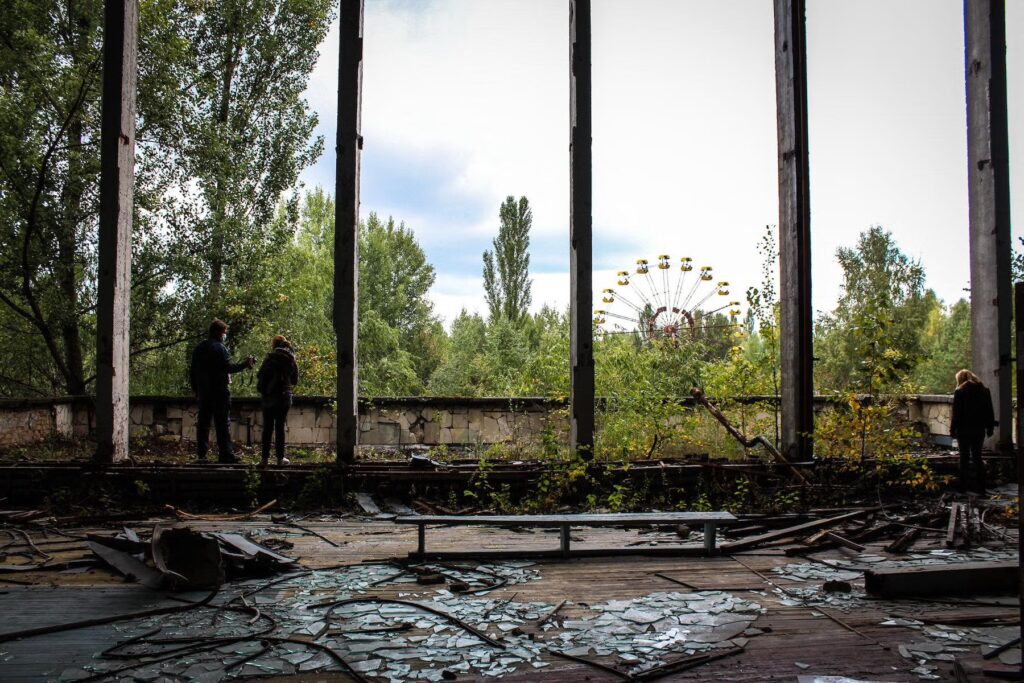
3. Pripyat and the Chernobyl Exclusion Zone, Ukraine
In 1986, a reactor at the Chernobyl Nuclear Power Plant exploded, releasing radioactive fallout across Eastern Europe and forcing the sudden evacuation of Pripyat, a thriving Soviet city. Today, its eerie remnants—schools with books still on desks, amusement parks with rusted rides—are frozen in time.
Dark tourism has made the Chernobyl Exclusion Zone one of the most unusual (and emotionally charged) destinations in Europe. Official tours are tightly controlled and include radiation monitoring to ensure safety. But walking through the abandoned ruins, you get a profound sense of both human fragility and the ferocity of nature, which has already begun reclaiming the land.
In a world of theme parks and Instagram filters, Chernobyl delivers raw, unfiltered truth.
Read More About The Chernobyl Exclusion Zone.
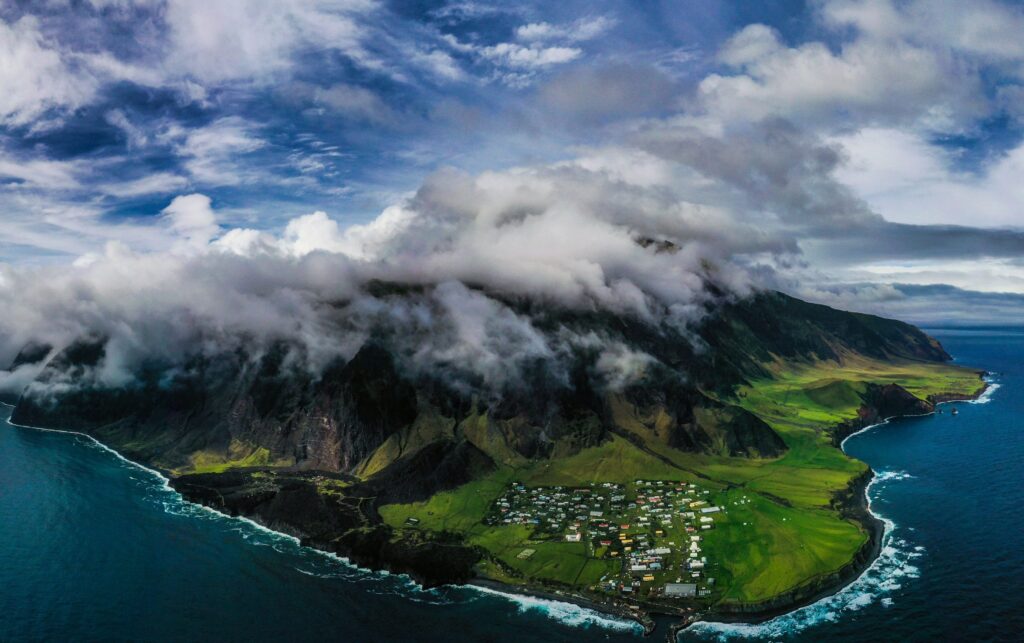
4. Tristan da Cunha, South Atlantic Ocean
This isn’t just off the beaten path—it’s the most remote inhabited island on Earth. Tristan da Cunha lies 2,400 kilometers from the nearest continent, only reachable by a seven-day boat trip from Cape Town.
The island is volcanic, weather-beaten, and home to a tight-knit community of around 250 residents. There are no hotels, no restaurants, and very limited infrastructure. What you get instead is pure remoteness: seabird colonies, lava cliffs, and a pace of life unrecognizable in the modern world.
Visitors must request permission in advance and plan months ahead, but the reward is something no travel agency can package—true isolation, real community, and nature unfiltered by tourism.
Read More About Tristan da Cunha.
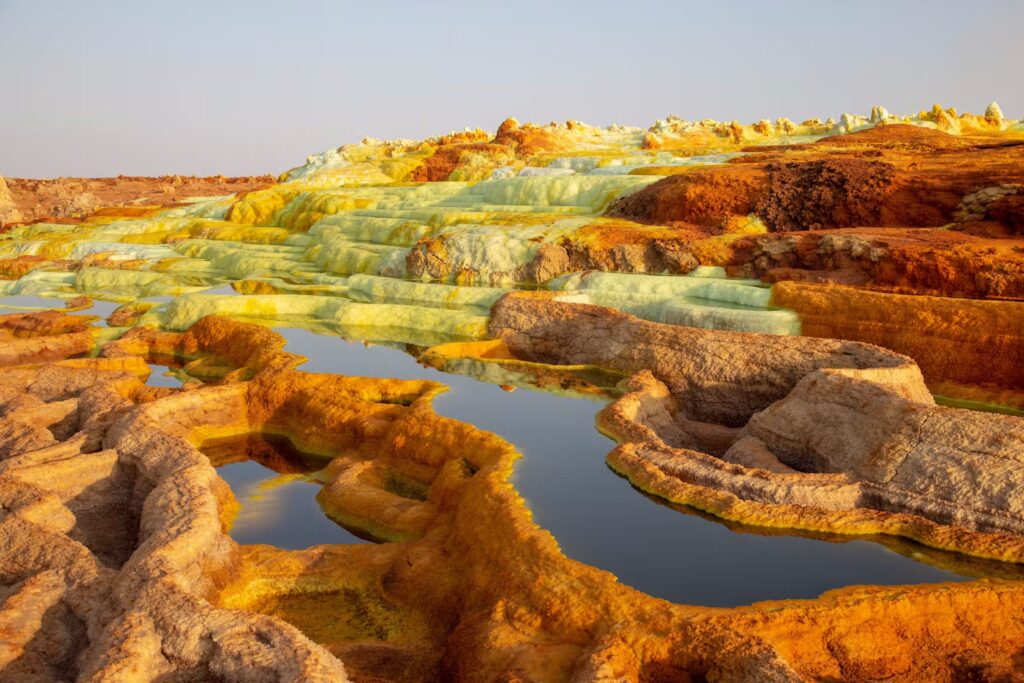
5. Danakil Depression, Ethiopia
Part desert, part inferno, the Danakil Depression is one of the hottest, driest, and most geologically bizarre places on Earth. Located in Ethiopia’s Afar region, it lies below sea level and features lava lakes, sulfur springs, acid pools, and vast salt flats that glow neon yellow and green.
Temperatures regularly exceed 45°C (113°F), yet the Afar people have lived here for centuries, mining salt and navigating an unearthly terrain with surprising grace.
Touring Danakil requires an experienced guide, serious logistics, and a tolerance for heat, but it offers a front-row seat to Earth’s most extreme geophysical theater.
Read More About The Danakil Depression.

6. Lake Natron, Tanzania
It’s beautiful—and deadly. Lake Natron is a highly alkaline lake that turns a deep red due to mineral content and microorganisms. Its waters can calcify birds mid-flight and preserve their remains in ghastly detail. And yet, paradoxically, it’s also the primary breeding ground for over 2 million flamingos.
The surreal visuals and ecological contradictions make Lake Natron one of the most unique ecosystems in Africa. Visitors can hike to nearby volcanoes, visit Maasai villages, and observe this bizarre, death-defying habitat firsthand.
This is the kind of place that forces you to rethink everything you know about what’s “habitable.”
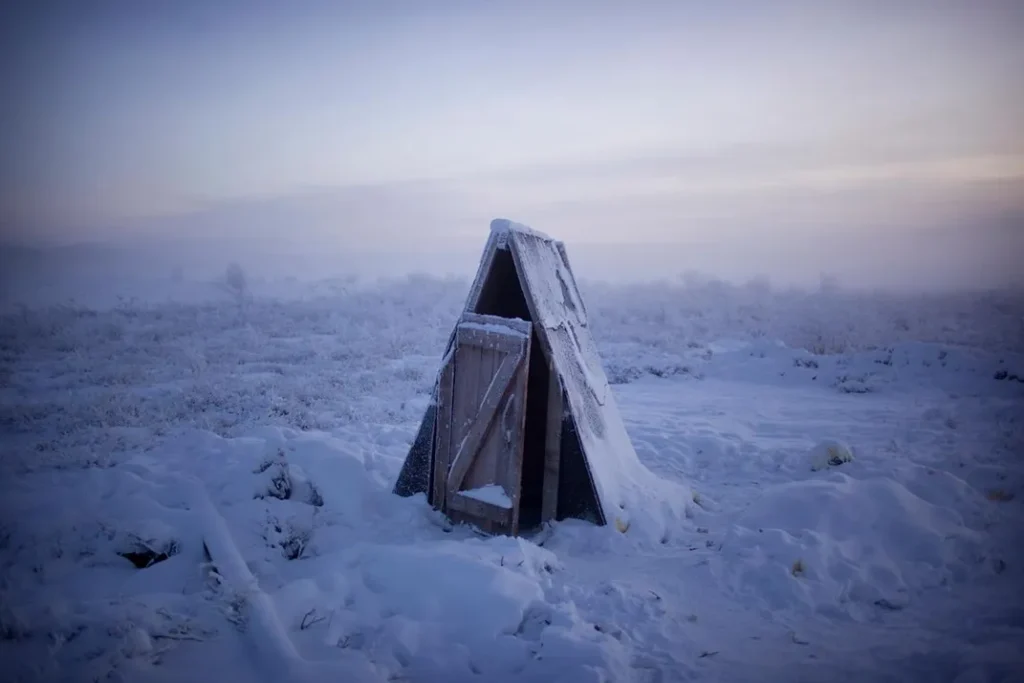
7. Oymyakon, Russia
If hell is hot, Oymyakon is the frozen opposite. This Siberian village holds the record for the coldest temperature ever recorded outside Antarctica: –67.7°C (–89.9°F). Here, cars run 24/7 to keep from freezing solid, and livestock are kept indoors most of the year.
Tourism exists here in a very niche form. Brave travelers can stay in guesthouses, visit frozen rivers, meet reindeer herders, and experience what life is like in a place where eyelashes freeze and boiling water turns to snow in mid-air.
Oymyakon isn’t for everyone. But it’s a rare chance to see humanity living—and thriving—on the edge of what’s survivable.
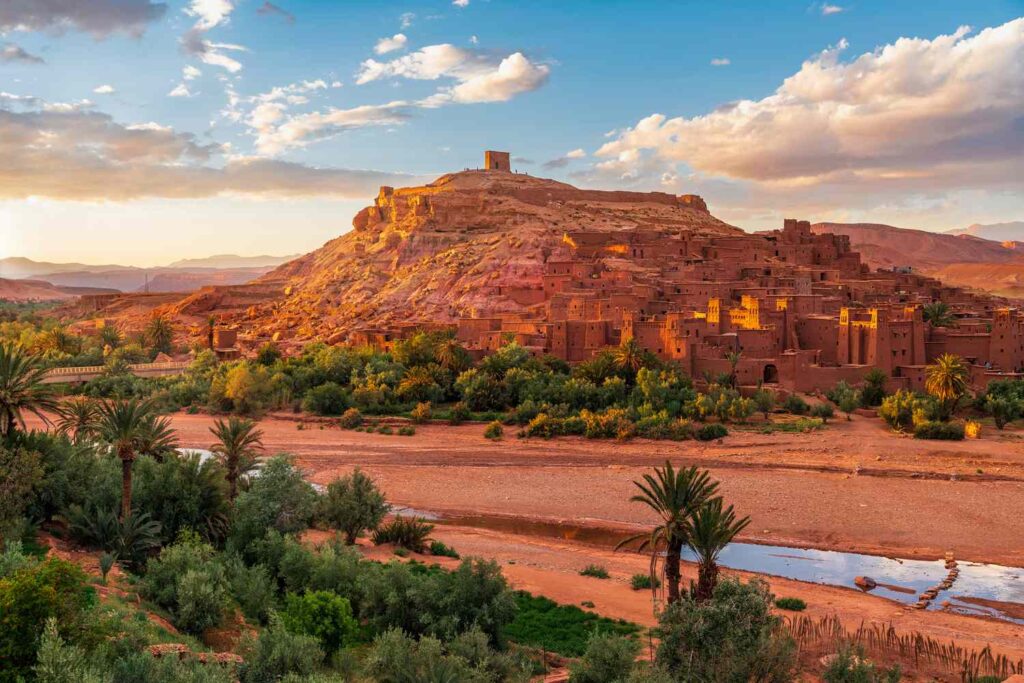
8. Aït Benhaddou, Morocco
A fortified village of red-earth kasbahs nestled in the Moroccan desert, Aït Benhaddou looks like something out of a dream. Or more accurately, a movie—because it’s served as the backdrop for everything from Gladiator to Game of Thrones.
Though many buildings are uninhabited, a few families still live inside the ancient walls, and it’s possible to stay overnight in locally owned riads. Climb to the top at sunset, and you’ll get a panoramic view that feels pulled from mythology.
Touristy by day, otherworldly by night—this is one of Morocco’s most visually unusual, yet historically rich, travel experiences.
Read More About Ait Benhaddou.

9. Tanna Island, Vanuatu
Part of the remote South Pacific nation of Vanuatu, Tanna Island is best known for Mount Yasur, one of the world’s most active volcanoes. Visitors can hike right up to the crater’s edge to watch lava explode into the night sky—a primal, unforgettable spectacle.
But it’s the culture that makes Tanna truly unusual. The island is home to kastom villages that reject modern life, and to the John Frum movement—a so-called cargo cult that awaits the return of an American god-figure said to bring abundance and peace.
Add black sand beaches, underwater caves, and spiritual ceremonies, and you’ve got a destination that challenges nearly every travel norm.
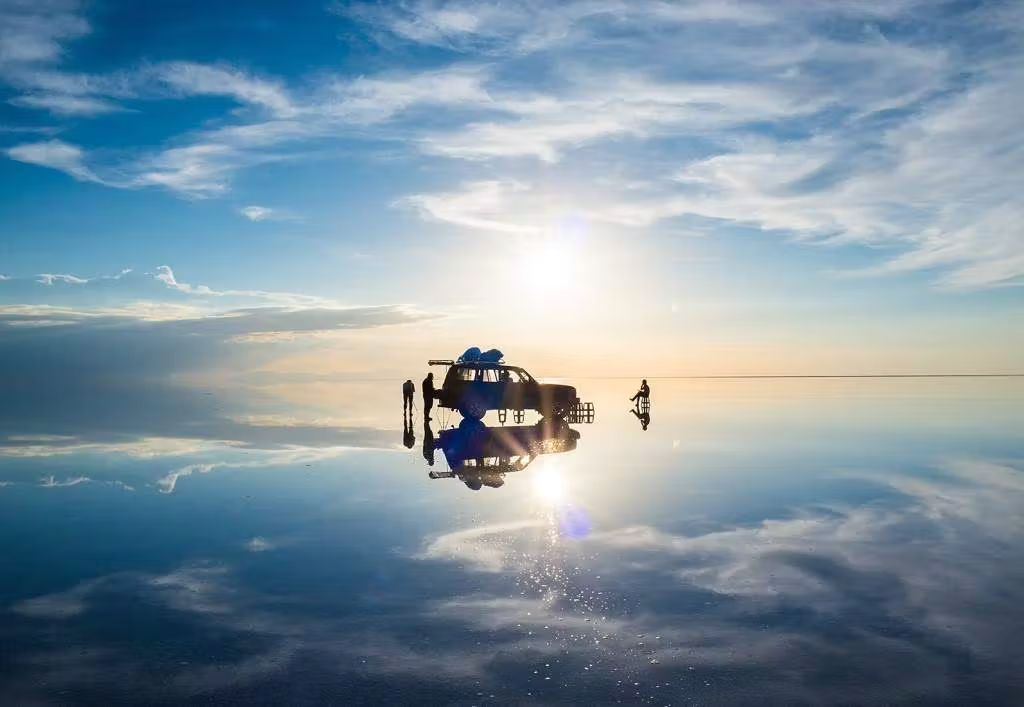
10. Salar de Uyuni, Bolivia
Spanning over 10,000 square kilometers, Salar de Uyuni is the world’s largest salt flat—and possibly the most photogenic place on the planet. During the rainy season, a thin layer of water transforms the flats into a vast, perfect mirror of the sky.
But even in the dry season, it’s surreal. You can visit cactus-covered islands, drive across an endless white horizon in a 4×4, or sleep in a hotel built entirely of salt blocks. At night, the stars stretch into infinity, thanks to the thin air and high altitude.
It’s more than a backdrop—it’s a portal to another reality.
Read More About Salar de Uyuni.
What Makes a Place Truly Unusual?
“Unusual” doesn’t have to mean remote or extreme. It doesn’t always require a hazmat suit or a satellite phone. What it means—more than anything—is unfamiliar. Surprising. Capable of shifting your sense of what’s normal, what’s beautiful, or even what’s possible. It’s not always about danger or difficulty. Sometimes, it’s just about being somewhere that makes you feel small in the best way.
An unusual place can be a Siberian village that survives subzero winters, or an island where trees bleed red resin and birds turn to statues. It can be a city left behind by disaster, or a desert that bubbles with acid and lava. These are places where the rules you live by—about time, comfort, or even physics—no longer apply.
They aren’t just destinations. They’re thresholds. Points of transformation. And to reach them, you often need to trade convenience for intention, comfort for curiosity. You have to get lost a little, or learn to sit with discomfort. That’s the toll at the edge of the map. But what you gain is a kind of clarity, a deeper connection—not just to the place, but to the version of yourself that chose to go.
In a world where nearly every landmark is geotagged, reviewed, and reposted, choosing the unusual has become its own quiet act of resistance. It’s a refusal to let your travels be dictated by algorithms or filtered popularity. It’s a reminder that adventure isn’t about distance—it’s about disorientation, wonder, and awe.
So research deeply. Travel responsibly. Respect the places that have remained beautifully outside the mainstream. Go where your friends haven’t. Ask better questions. Take fewer photos. Let the strangeness of a place sink in before trying to explain it.
Because in the end, the most unusual places leave the strongest mark—not just in your memory, but in your perspective. They don’t just change your itinerary. They change you.